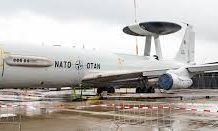
The “High-Precision Complexes” division of Rostec has completed the final delivery of upgraded BTR-MDM amphibious armored personnel carriers to the Russian Ministry of Defense under a one-year state defense contract. Rostec confirmed the fulfillment of this order in a statement provided to TASS.
This delivery aligns with contractual obligations, ensuring the provision of BTR-MDM units equipped with enhanced protection kits, visibility-reducing systems, and top-hemisphere defense measures. These upgrades are tailored to address operational demands, reflecting the evolving requirements of modern combat scenarios.
The BTR-MDM Rakushka serves as a key asset for Russia’s airborne forces, embodying versatility and mobility. Developed by the Volgograd Tractor Plant and introduced in 2015, it builds on the BMD series to meet the demands of rapid deployment and combat adaptability across varied terrains. Its chassis, derived from the BMD-4M infantry fighting vehicle, incorporates amphibious and airdrop capabilities, while prioritizing troop and equipment transport.
Powered by a UTD-29 diesel engine generating 500 horsepower, the BTR-MDM achieves speeds of 70 km/h on roads and 10 km/h in water, with an operational range of 500 kilometers. Its aluminum-alloy armor provides protection against small arms fire, shell fragments, and mines, while applique kits enhance survivability against heavier threats. Recent upgrades include reduced thermal and radar visibility and the integration of a spall liner for added crew protection.
The vehicle accommodates up to 13 personnel, including a crew of two, and features modernized navigation and communication systems. These systems utilize a GLONASS-based platform for secure, real-time situational awareness. The interior design emphasizes rapid ingress and egress through rear and side doors, supplemented by roof hatches.
While minimally armed with a PKT 7.62mm machine gun, the vehicle’s modular architecture allows for additional armament, such as Kornet anti-tank guided missiles, when mission-specific needs arise. Variants of the BTR-MDM include command-and-control, medical evacuation, and cargo configurations, each leveraging its base design for specialized operations.
Recent improvements have focused on electronic warfare and counter-drone capabilities, including active protection systems like the Afghanit APS and advanced optics for low-visibility environments. Its amphibious capabilities, enabled by hydrojets and a watertight hull, remain integral to its role, supporting river and lake crossings without preparation.
Ongoing procurement by the Ministry of Defense has emphasized models with enhanced top-hemisphere protection, addressing emerging threats from aerial and drone-based attacks. These adaptations reflect Russia’s strategic shift toward multi-domain warfare readiness.
In summary, the BTR-MDM Rakushka underscores Russia’s focus on modular, mobile, and versatile platforms to support rapid-reaction forces. Its combination of survivability, adaptability, and mission flexibility ensures its relevance on modern battlefields while offering a foundation for future innovations.




